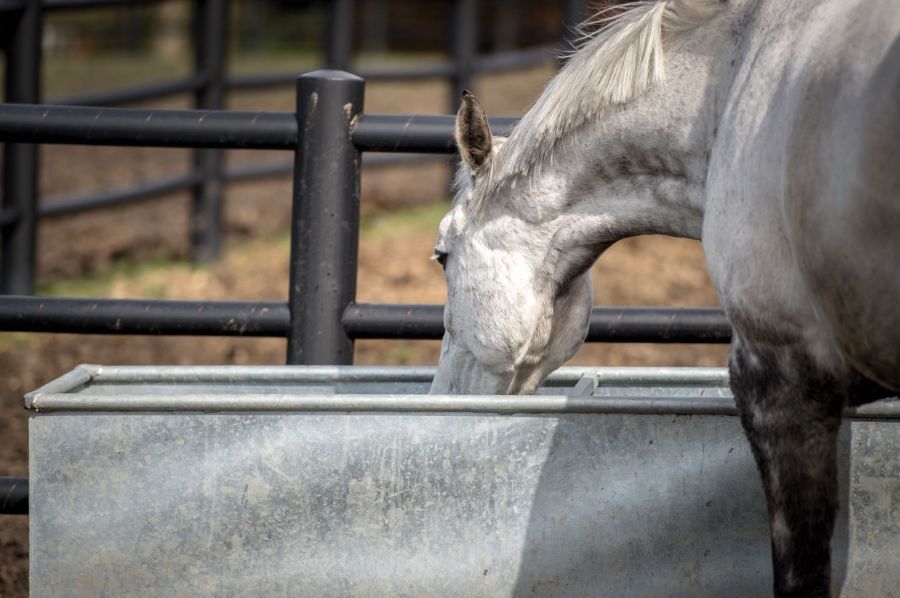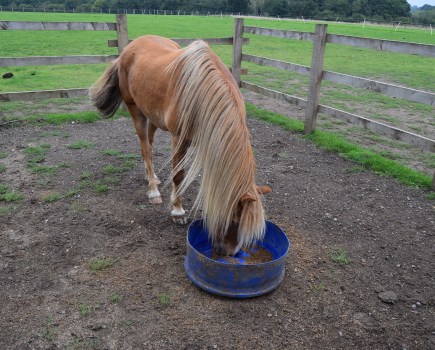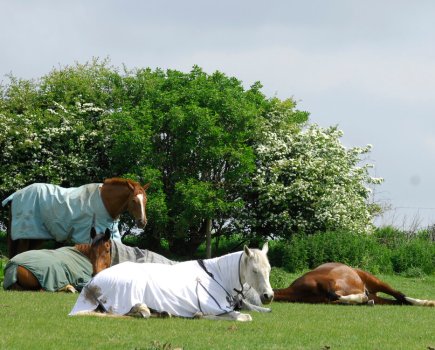Water is the source of life. It means, therefore, that it is essential not only that your horse has constant access to a reliable supply of clean, uncontaminated water, but that you as a responsible owner monitor how much they are drinking. Horses require a lot of water for their digestive system to function efficiently due to their high fibre diet: the water helps food move along the digestive system and prevents blockages, which could lead to colic. One of the first effects of dehydration is a slowing of digestive functions. There is generally considerable focus on the importance of hydration during the summer, but it is just as crucial to maintain appropriate hydration levels in winter.
Horses cannot rehydrate just by drinking water; they also need access to water and electrolytes found in forage and feeds, or may be supplemented. As well as drinking water, horses also access stores of water in feed and forage, and while water naturally exits the body in urine and sweat, it is also lost via faeces (which are usually 80-90% water) and breath.
Of the water lost by a horse, 45% leaves the body in faeces, and around 30% in sweat, respiratory water loss and loss through the skin — a horse does not need to be sweating for water loss to occur. Urine accounts for only around 25% of total water loss.
What makes a horse thirsty?
Many factors play a part in determining how much water a horse drinks each day. They include:
- Forage type
- Feed type
- Protein intake
- Exercise
- Transport
- Stress
- Thermal environment
- Quality of water
- Electrolyte intake
- Reproductive state
- Lactation
- Diarrhoea
- Health
- Behaviour
- Certain medications can increase water intake, including diuretics (which increase urine production, such as furosemide) and glucocorticoids (for example, prednisone)
How can I keep my horse hydrated?
Soaking and steaming hay are good ways to increase water intake and will also help improve hygienic quality. Steaming has the advantage of being much quicker and maintaining the nutritional quality of hay.
The amount of water that will be taken up will depend upon the water content and maturity of the forage being soaked or steamed. Earing et al (2013) found that steaming increased the water content of an alfalfa-orchard grass mixed hay almost three-fold, from an initial water content of 8%, to 23%.
In a two-hour feeding period, the horses also ate four times as much steamed hay compared with the same hay unsteamed. The same authors using similar hays found that soaking for 15 or 60 minutes increased the water content from 9% to 17-21%.
However, the downside of soaked hay when it comes to rehydration is that a significant amount of the electrolytes will have been lost in the process of soaking, whereas these will be retained in steamed hay.
Adding plenty of water to feeds will also work well to help with your horse’s hydration.
Dr David Marlin’s members area on his website provides access to science-backed information spanning a wide range of horse-related matters, including webinars, latest research findings, independent product trials and celebrity interviews, with the additional opportunity to join a friendly, supportive private community of fellow horse lovers. Pay-monthly membership is £8. Find out more and join here.









